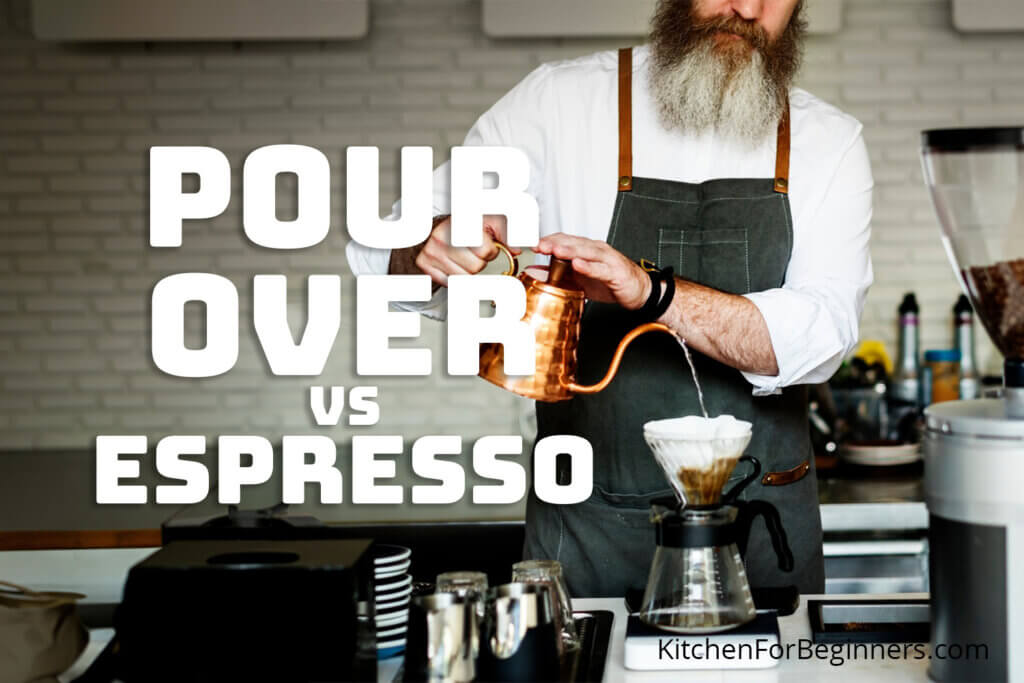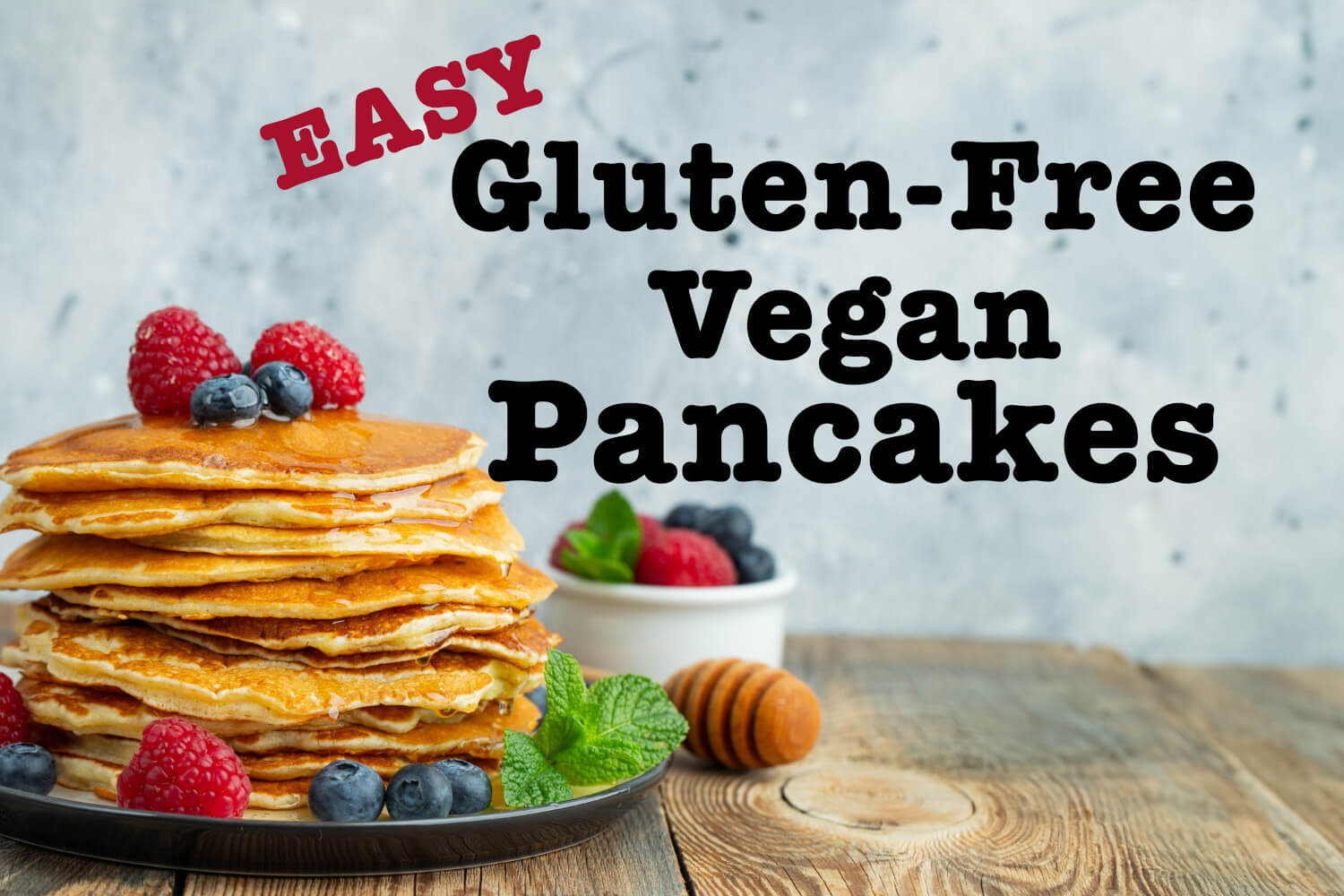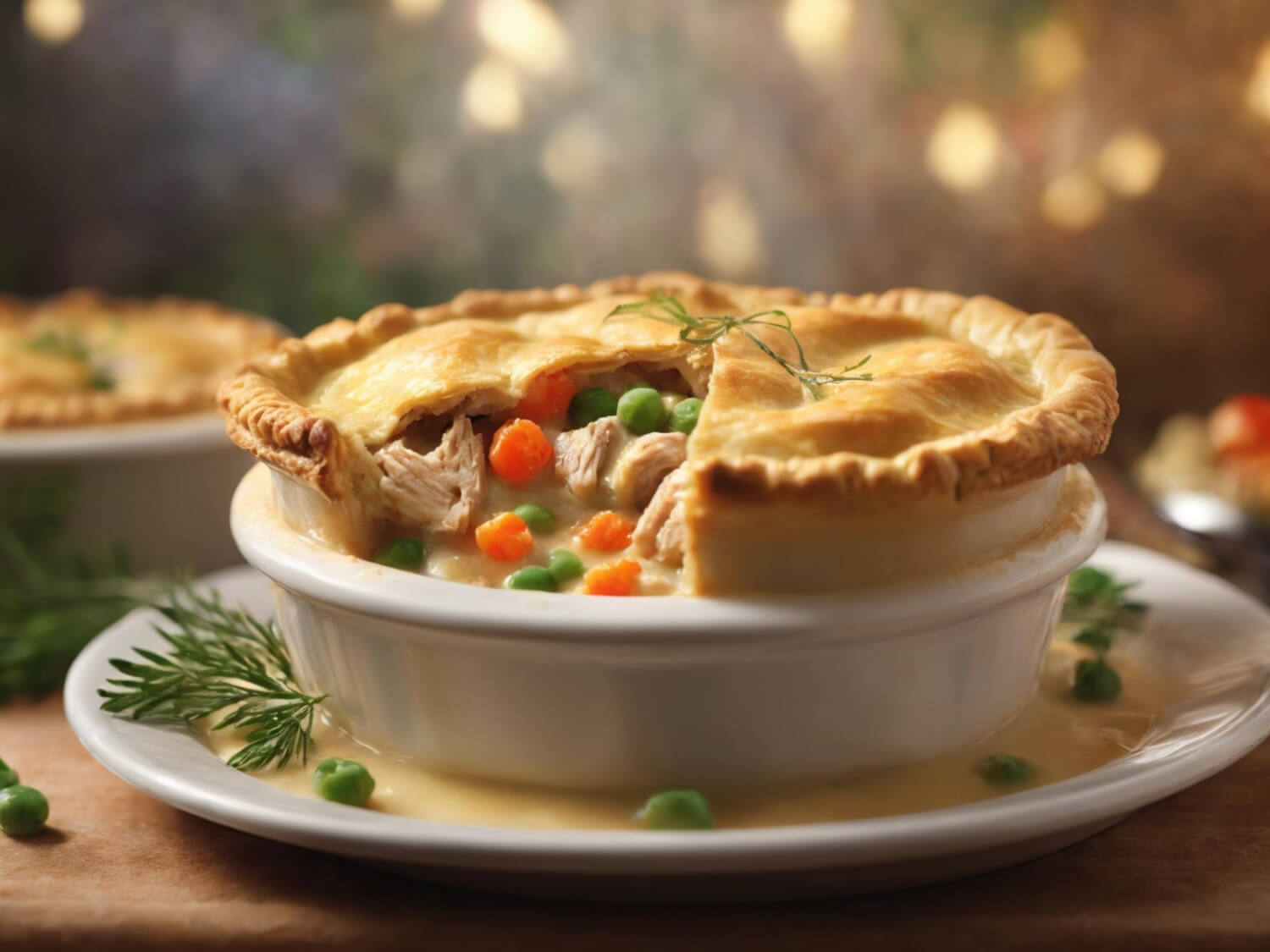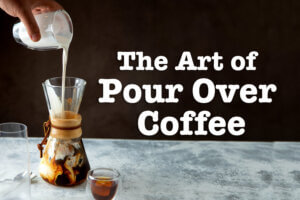Are you pondering whether pour over or espresso will better satisfy your coffee cravings? The choice hinges on more than just taste—it’s about the art of the brew versus the rush of intensity. In this guide on ‘pour over vs espresso’, we’ll dissect the methods, gear, and flavor distinctions essential to your decision. By unpacking the precise pour over technique and the high-octane espresso experience, we unveil which brew style not only suits your palate but also fits your pace of life.
Key Takeaways
- The pour over method emphasizes flavor clarity and subtleties of single-origin beans, while espresso offers a fast and concentrated coffee experience with a full-bodied punch and a rich, intense flavor profile.
- Pour over and espresso differ greatly in their brewing techniques; pour over uses a medium grind and gravity for extraction, and is more sensitive to pouring technique and water temperature, while espresso requires a finer grind with high pressure for a quick extraction.
- Brewing equipment is a key consideration in choosing between pour over and espresso, with pour over generally being more cost-effective and simpler to use, whereas espresso equipment can be significantly more expensive and complex.
Pour Over and Espresso: A Brief History
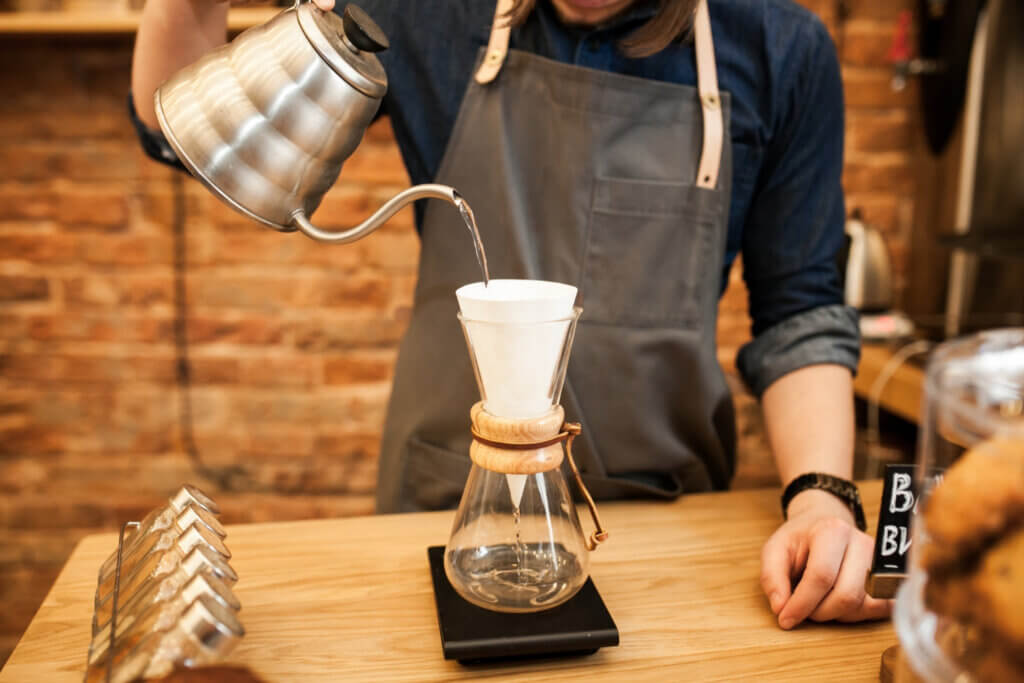
Diving into the annals of coffee history, we find the origins of pour over and espresso brewing methods. The pour-over method traces its roots back to Germany, where in 1908, Amalie Auguste Melitta Benz revolutionized coffee brewing. Tired of bitter coffee, she invented a new brewing method using a brass pot with holes, and a piece of her son’s schoolbook as a filter. This not only earned her a patent but led her to establish her own business, shaping the future of pour over coffee.
On the flip side, espresso’s inception was fueled by a need for speed and efficiency. Hailing from Italy, the espresso machine was patented in 1884 by Angelo Moriondo. Its purpose? To deliver a fast, concentrated coffee experience. The espresso method is a testament to Italy’s love for rich and robust coffee, served quickly and enjoyed leisurely.
The Rise of Pour Over Coffee
Pour over coffee, with its humble beginnings in Germany, has since garnered a global following. Its popularity is largely attributed to its emphasis on flavor clarity. This brewing method prioritizes the intricate subtleties and brightness of single-origin beans, allowing coffee connoisseurs to savor each unique characteristic of the bean.
The pour over method’s rise to fame can also be credited to the Japanese brand Hario, which developed the V60 brewer. First mass-produced in 2004, this device further enhanced the pour over brewing method, allowing the distinct and delectable tasting notes of single-origin beans to shine.
Espresso’s Italian Roots
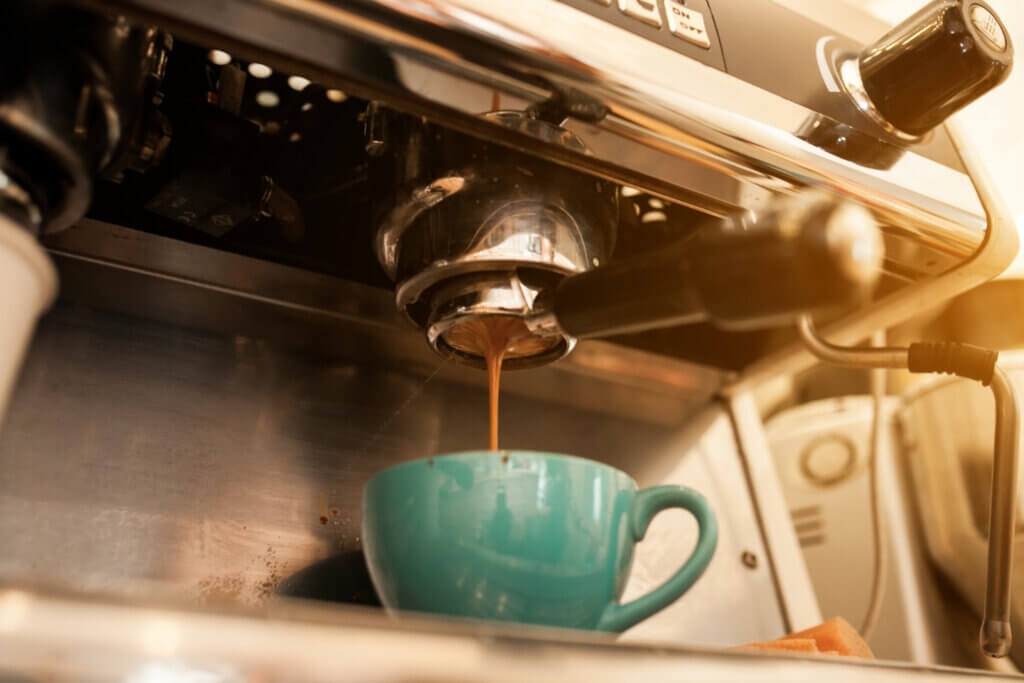
The invention of the espresso machine can be traced back to Italy’s bustling coffee culture. The first patent for an espresso machine was approved in 1884, with Angelo Moriondo at its helm. Luigi Bezzera created the single-shot espresso in the early 1900s. This innovation quickly gained popularity among coffee enthusiasts. The primary motivation behind these inventions was to increase the speed and efficiency of brewing coffee, catering to Italy’s fast-paced lifestyle.
Espresso transgresses the boundaries of conventional coffee, offering a unique, concentrated coffee drink experience. Brewed by applying high pressure to force hot water through finely ground coffee beans within 20-30 seconds, espresso is characterized by:
- a powerful, full-bodied punch
- a bold and intense flavor profile
- a rich aroma
- a smooth and velvety body
- a balanced acidity
These qualities make espresso coffee a favorite in many coffee shops, including specialty coffee shops and the local coffee shop, around the world.
Brewing Techniques: Pour Over vs Espresso
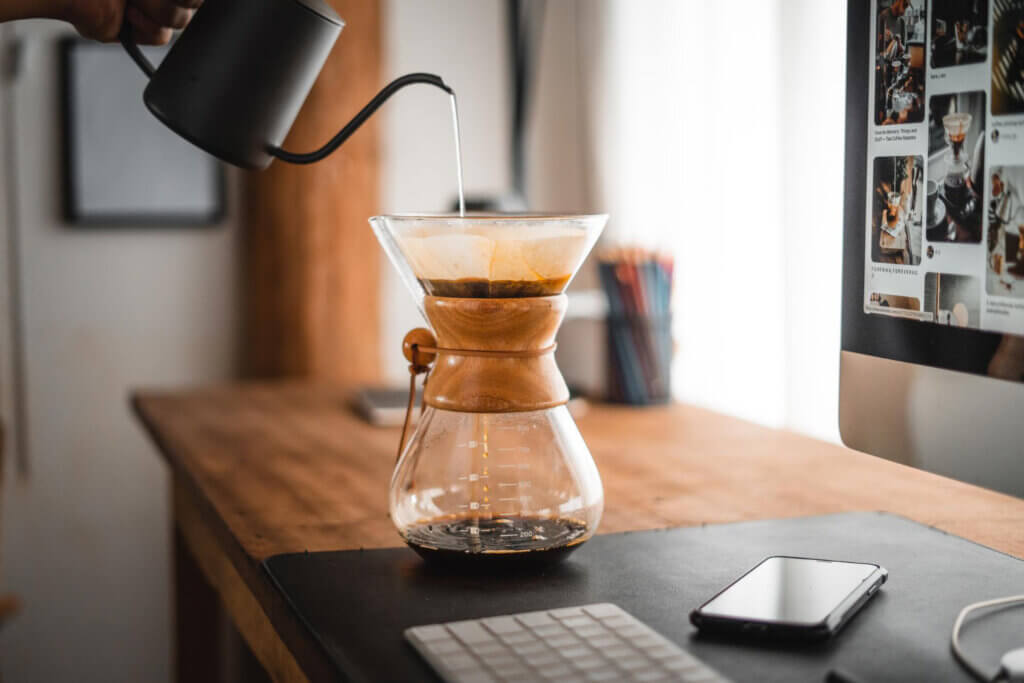
How does the brewing technique influence your final cup of coffee? Let’s delve into this by exploring the brewing methods of pour over and espresso. Espresso requires a finer grind size to facilitate extraction under high pressure. On the other hand, pour over utilizes a medium grind, allowing optimal extraction as water flows through.
Furthermore, water temperature and brewing duration play a pivotal role in these methods. Pour over brewing is typically conducted at slightly lower temperatures (195-205°F) compared to the highly pressurized water used for espresso (190-205°F). This influences the flavor and aroma profiles of the final brew. While espresso extraction is a rapid process, taking 20 to 30 seconds due to pressurized hot water, the duration for pour over can be variable and typically longer, ensuring careful control to avoid over-extraction and bitterness.
Mastering the Pour Over Technique
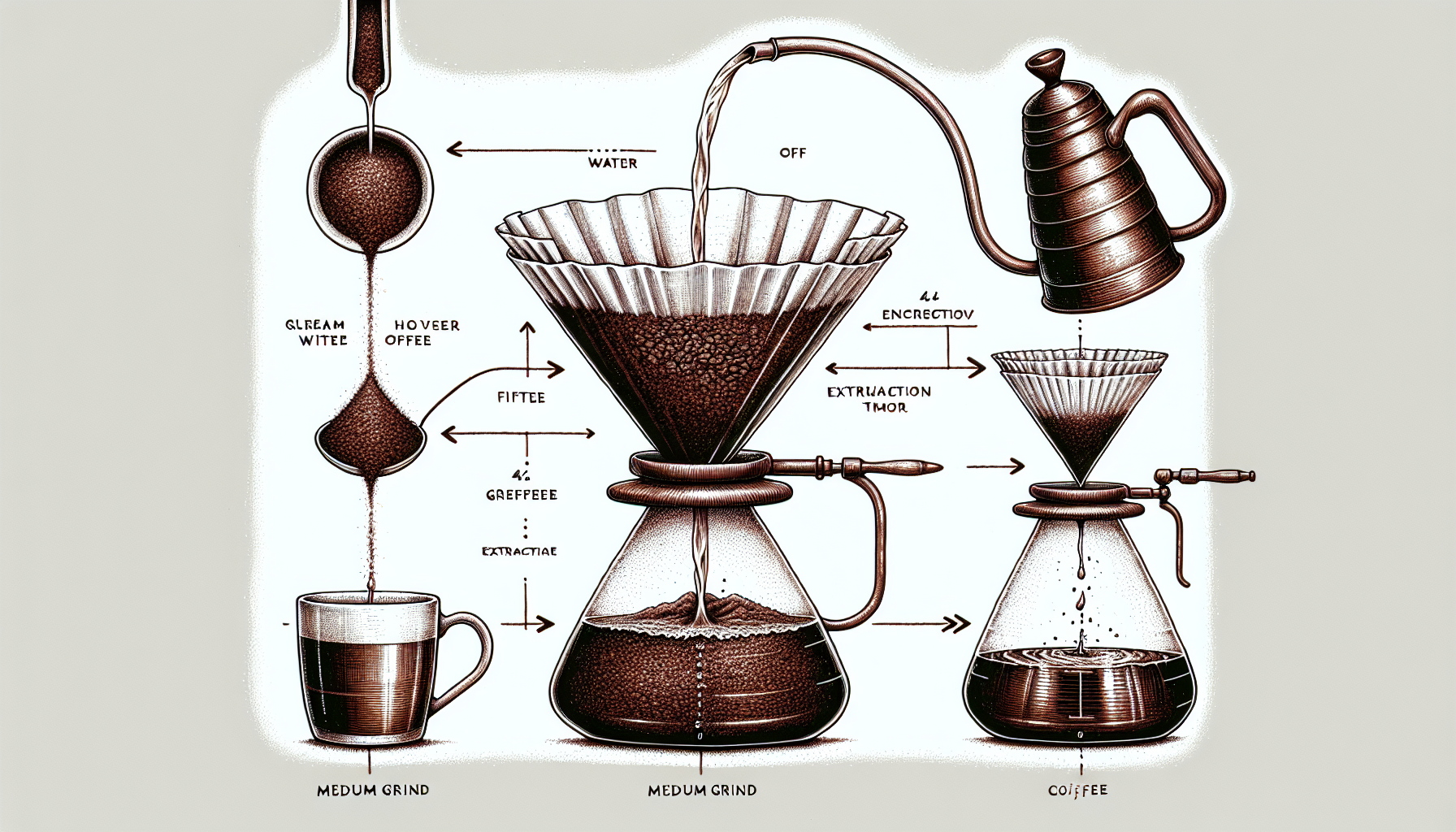
Pour over coffee brewing, at its core, is a delicate art. It involves pouring hot water over coffee grounds in a filter, with the brewing process typically taking 2-4 minutes. This results in a cleaner cup with less body compared to espresso, allowing the coffee’s unique characteristics to shine through. The ideal grind for pour-over brewing methods is medium, as these techniques involve moderate contact time utilizing gravity.
The secret to mastering the pour over technique lies in controlling the water stream. Here are some tips to help you achieve consistent and delicious pour over coffee:
- Maintain consistent concentric circles while pouring the water.
- Use pulse pouring, which involves adding water in intervals, to ensure even saturation.
- Practice patience and take your time with the pour over process.
- Go ahead and try out different water temperatures and grind sizes. Adjust these until you find your preferred taste.
- Enjoy the nuanced extraction process and savor the delicious cup of coffee that pour over brewing produces.
Pour over coffee is a favorite among many coffee enthusiasts because of its ability to bring out the flavors and aromas of the coffee beans.
Perfecting the Espresso Extraction
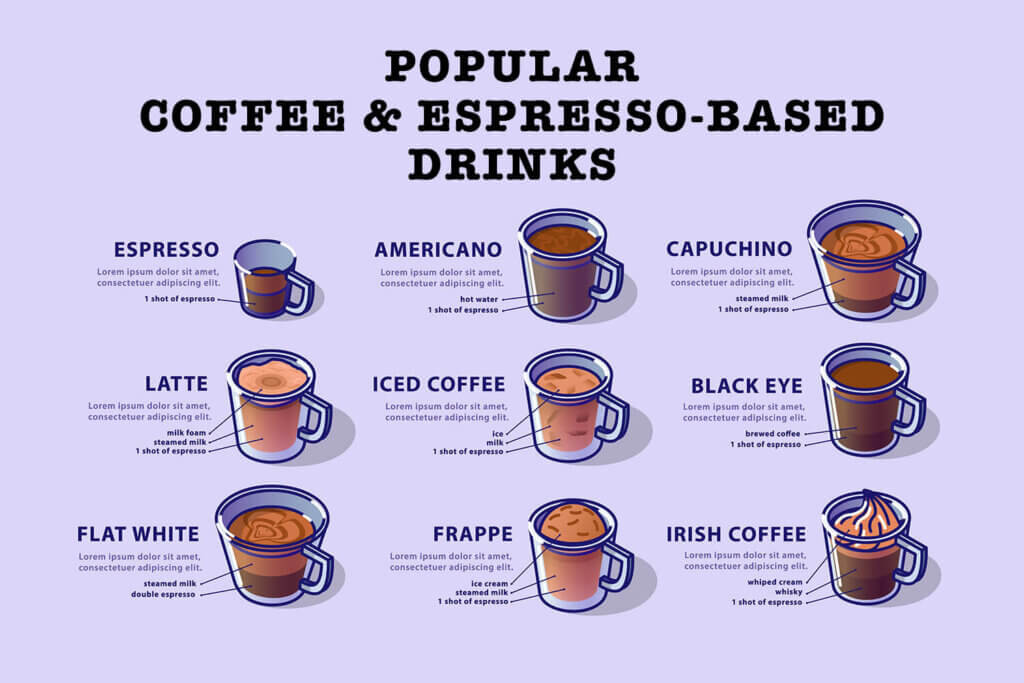
Espresso brewing is a process that demands precision and engagement. The technique requires a very fine grind to facilitate optimal flavor extraction within the short brewing time. The grind size for espresso determines how fast or slow water flows through the filter, hence affecting the overall extraction quality.
High pressure is crucial in espresso brewing, rapidly extracting flavors and caffeine from the finely ground coffee. This detailed process, perfected over time, is what creates the distinctive, bold, and intense sensory experience of espresso. It’s no surprise that espresso machines demand a more precise and engaged brewing process compared to pour-over coffee equipment.
Flavor Profiles: Unraveling the Taste Differences
Now, let’s take a moment to savor the unique flavor profiles of both brewing methods. Pour over coffee, with its lighter body and higher acidity, offers a clearer expression of flavors inherent to the coffee’s origin. On the other hand, espresso, characterized by its concentrated and bold flavor profile, provides a dense and rich coffee experience, complemented by a distinctive crema.
In terms of mouthfeel, espresso vs pour over coffee offers contrasting sensations. Espresso is syrupy and strong, providing a robust and intense flavor that lingers on your palate. Contrastingly, pour over coffee offers a smoother, less dense sensation, allowing subtle flavors to shine through. The brewing methods, gravity-led for pour over and high-pressure for espresso, significantly shape the aromatic and taste profile of each cup.
Pour Over Coffee: A Symphony of Subtle Nuances
Pour over coffee, known for its delicate and nuanced flavors, offers an experience where the natural subtleties of the coffee come to the forefront. Among various coffee brewing methods, this brewing method allows coffee connoisseurs to savor each unique characteristic of the bean, creating a symphony of subtle nuances for the taste buds.
The beauty of pour over coffee, a popular alternative to drip coffee, lies in:
- The use of single-origin beans, highlighting the distinctive taste notes specific to the bean’s region of cultivation
- The unique tasting experience it offers
- Specialized pour-over coffee equipment like the Kalita Wave 185 Dripper and the Hario V-60 Coffee Dripper, which enhance the extraction of nuanced flavors
All of these factors contribute to a delicious cup of coffee.
Espresso: Bold and Intense Sensations
Espresso, on the other hand, is known for its distinctive, rich crema that results from the pressurized brewing process. This crema, comprising proteins, oils, and a component known as black essence, contributes to espresso’s rich and robust flavor profile.
While opinions on espresso’s crema vary, with some considering it a sign of quality and others finding it too bitter, there’s no denying its role in creating the bold and intense sensory experience of espresso.
This velvety texture and complex flavors from the crema are what make espresso a favorite among many coffee enthusiasts.
Caffeine Content: Comparing the Buzz
A question that often surfaces in coffee conversations is, “Which has more caffeine, espresso or pour over?” Well, the answer might surprise you. While espresso has more caffeine per ounce, the larger serving size of pour over coffee leads to a higher total caffeine content. Sounds paradoxical, doesn’t it?.
But here’s the catch. The caffeine experience can differ significantly between these two methods. The smaller volume of an espresso shot often leads to a different caffeine intake compared to pour over coffee. So, your overall caffeine intake is larger with pour-over coffee due to its larger serving size, making caffeine content preference a matter of personal need and taste.
Equipment Essentials: Choosing Your Coffee Gear
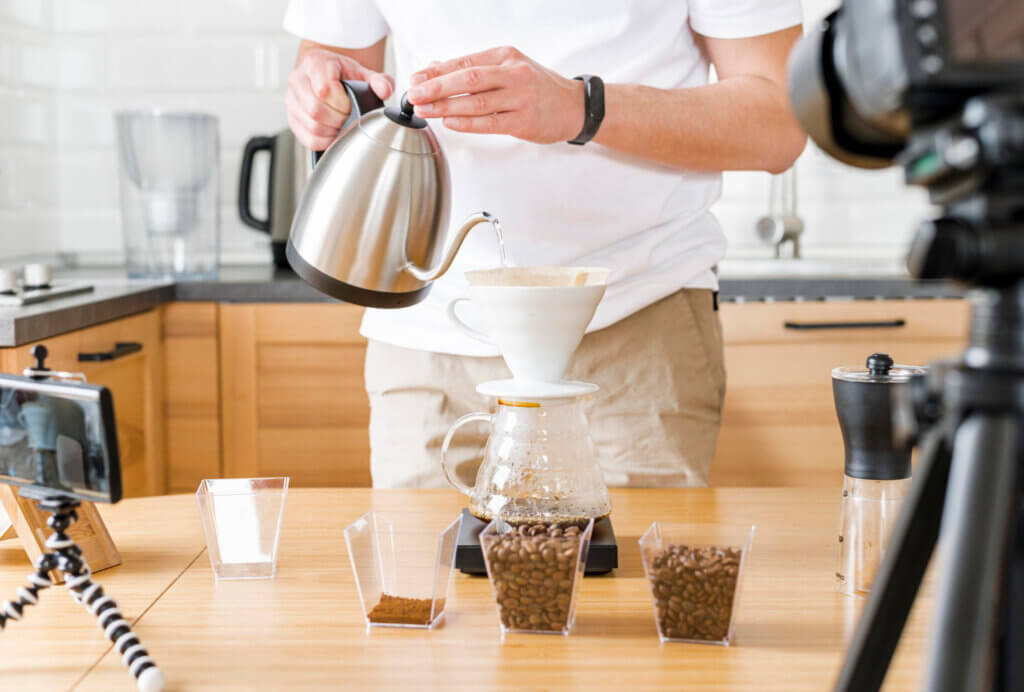
Choosing between pour over and espresso brewing methods isn’t just about flavor or caffeine content, it’s also about the equipment. Brewing costs are a significant consideration for many coffee enthusiasts when choosing between these methods. While pour-over coffee equipment generally incurs lower costs, espresso machines can range from $150 to thousands of dollars, making espresso a more expensive brewing method in terms of initial investment.
It’s also important to note that the complexity of the equipment can vary between these two brewing methods. Pour over equipment tends to be simpler, mainly requiring a filter, whereas espresso machines are more complex, featuring components such as a metal basket, group head, and pressure gauge.
Pour Over Coffee Must-Haves
So, what do you need to start your journey with pour over coffee? The fundamental equipment for pour-over coffee includes a filter cup and filter paper, as well as an electronic scale and pour-over kettle. These items are essential for achieving a well-crafted brew. These tools, while simple, play a crucial role in ensuring the perfect pour over brew.
Other popular pour over devices include the Chemex and the Hario V60, praised for their consistent results and ease of use, especially for those new to pour over coffee. With a basic setup available for under $100, pour-over brewing equipment proves to be a more cost-effective choice, making it accessible to a wider range of coffee enthusiasts.
Essential Espresso Machines
On the other hand, espresso brewing requires a more sophisticated set of tools. When selecting an espresso machine, it is crucial to consider whether it can generate enough pressure to produce high-quality espresso. Some home espresso machines may not offer the same quality as commercial coffee machines due to insufficient pressure. This is why espresso machines range from $150 to thousands of dollars, reflecting the variety in quality and features.
For those seeking to make espresso at home without breaking the bank, manual stovetop espresso makers like the Bialetti Moka Express offer a more affordable alternative. These machines provide the following essential features for brewing espresso:
- Stovetop design
- Easy to use
- Durable construction
- Compact size
These features make manual stovetop espresso makers a popular choice for home baristas.
Coffee Bean Selection: Roasts and Grinds
No matter how sophisticated your brewing method or equipment, the selection of coffee beans is crucial to the end result. Espresso often uses darker roasted beans which contribute to its rich, robust flavor profile. On the other hand, pour over coffee can utilize a wider range of roasts, including:
- lighter ones that highlight fruitiness and acidity
- medium roasts that balance sweetness and acidity
- darker roasts that bring out chocolate and caramel notes
Moreover, the grind size also plays a significant role in the brewing process. Espresso requires a fine, powder-like consistency to facilitate rapid extraction under high pressure. Meanwhile, pour-over coffee utilizes a coarser grind size compatible with its slower extraction process and longer water contact time.
The consistency in grind size is crucial for achieving an even extraction in both methods, directly influencing the quality and flavor experiences of the final coffee brew.
Roast Preferences: Light vs Dark
When it comes to coffee roasts, personal preference plays a huge role. Light roasts can preserve the unique characteristics of the coffee bean, such as floral or fruity notes, making them ideal for pour over coffee. These roasts allow for a clearer expression of the bean’s inherent flavors, resulting in a delicate and nuanced cup.
Contrastingly, medium-dark and dark roasts have:
- more pronounced chocolate-like notes
- a heavier mouthfeel
- a noticeable decrease in acidity
- flavors primarily shaped by the roasting process
While dark roasts often mask the subtle qualities of the bean, making them well-suited for espresso’s robustness, light roasts highlight these delicacies and are thus preferable for pour over.
The Art of Grinding: Fine vs Coarse
The grind size of your coffee beans can drastically affect the quality of your brew. Finer grinds increase the extraction rate by offering more surface area, which can lead to stronger flavors in less time. This is why espresso relies on a fine grind, facilitating rapid extraction under high pressure.
However, an important aspect to consider is the water flow rate during brewing. Finer grinds can speed up the flow, potentially causing over-extraction. On the other hand, coarser grinds, compatible with pour over’s slower extraction process, can avoid this issue leading to a more balanced brew.
Thus, the consistency of grind, from fine to coarse, is vital to the brewing process and directly influences the resulting flavor profile of the coffee.
Secrets from Years of Coffee Experience
Delving into the world of coffee brewing can be an exciting journey. As an avid coffee enthusiast who has tried nearly every coffee variant imaginable, I’ve learned that brewing coffee marries science and art. Understanding the precise techniques and principles is crucial for a premium experience.
Selecting high-quality coffee beans is crucial for each brewing method to achieve the best flavor outcomes. Whether it’s pour over or espresso, the art of coffee brewing is a dance of precision, patience, and passion. It’s not just about the final cup, but also the journey that leads to it. So, here’s to the love of coffee and the joy of learning how to prepare coffee.
Summary
Whether you’re a fan of the delicate nuances of pour over or the bold intensity of espresso, it’s clear that both brewing methods offer unique experiences. From the historical origins of these brewing techniques, through the mastery of brewing, to the selection of beans and equipment, the journey of coffee is a fascinating one. The beauty of coffee lies in its diversity and the endless possibilities it offers. So, whether you savor a pour-over at sunrise or an espresso at sunset, remember, it’s not just about the destination, but also the journey. Here’s to many more aromatic adventures in the world of coffee!
Frequently Asked Questions
Is pour over coffee really better?
Yes, pour over coffee is better because it results in a more robust and flavorful cup due to the controlled water stream. Enjoy your coffee!
What is the main difference between pour over and espresso?
The main difference between pour over and espresso is in their brewing techniques and flavor profiles. Pour over highlights flavor clarity with a medium grind, while espresso provides a bold, concentrated flavor using a fine grind.
Which has more caffeine, pour over or espresso?
Pour over coffee generally has a higher total caffeine content due to its larger serving size, despite espresso having more caffeine per ounce.
What equipment do I need for pour over coffee?
You’ll need a filter cup, filter paper, electronic scale, and a pour-over kettle for making pour over coffee. These items will help you achieve a delicious cup of coffee.
Can I use the same coffee beans for pour over and espresso?
Yes, you can use the same coffee beans for pour over and espresso, but the roast and grind size may need to be adjusted to suit each method. Keep in mind that espresso typically uses darker roasted beans and a finer grind, while pour over can work with a broader range of roasts and a coarser grind.
Related Posts
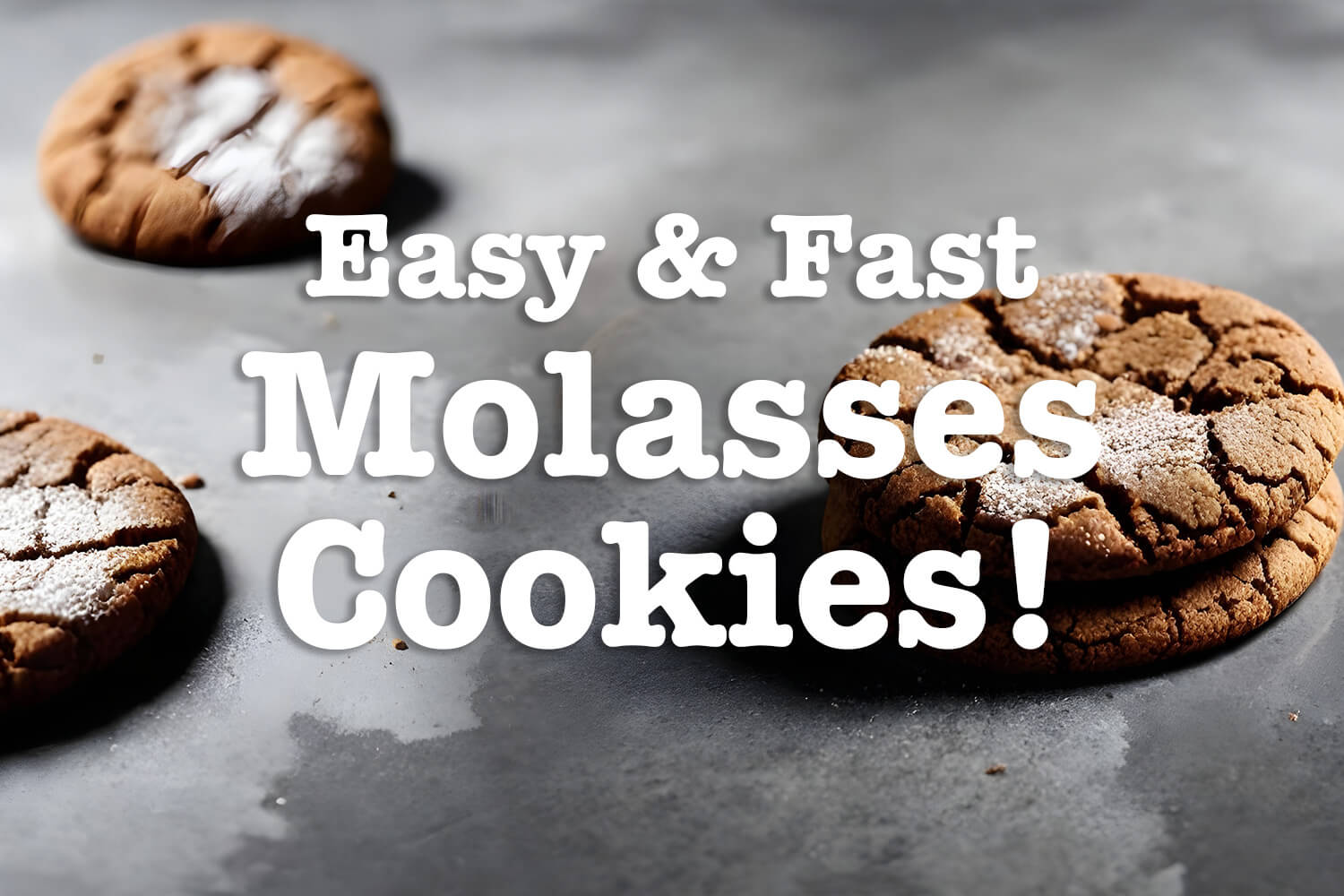
Easy Fast Molasses Cookie Recipe You’ll Love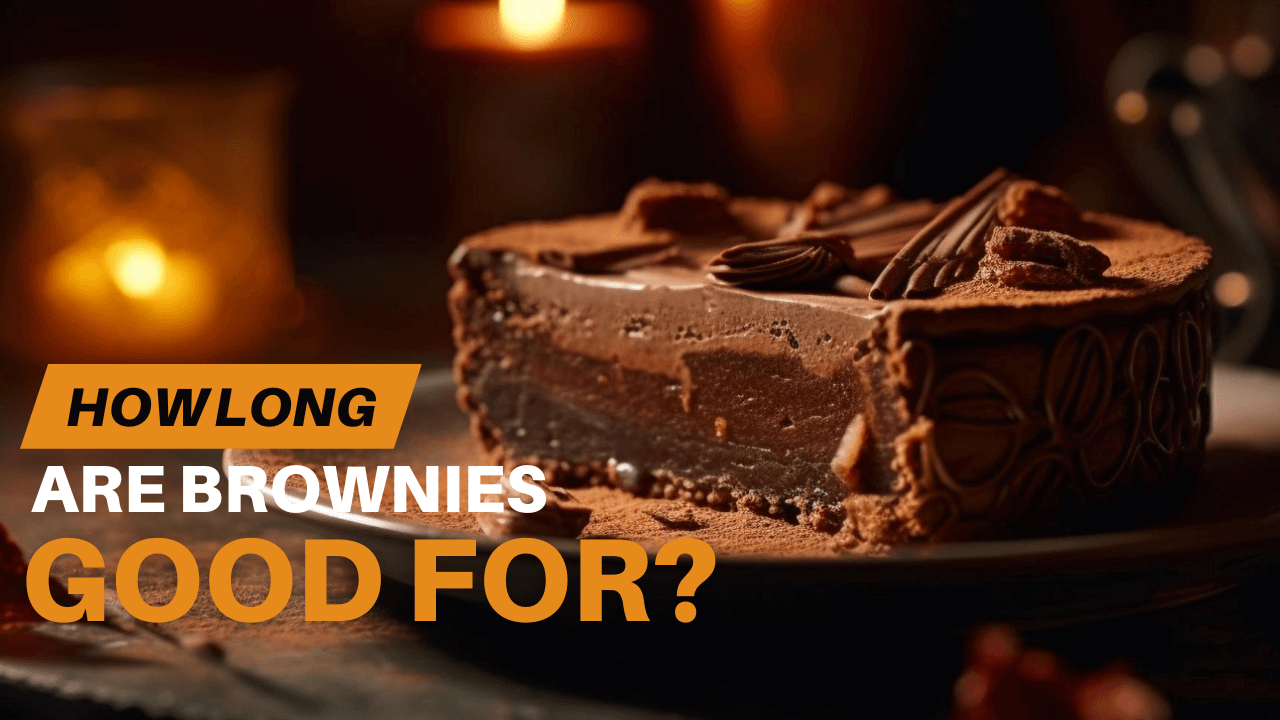
How Long Are Brownies Good For?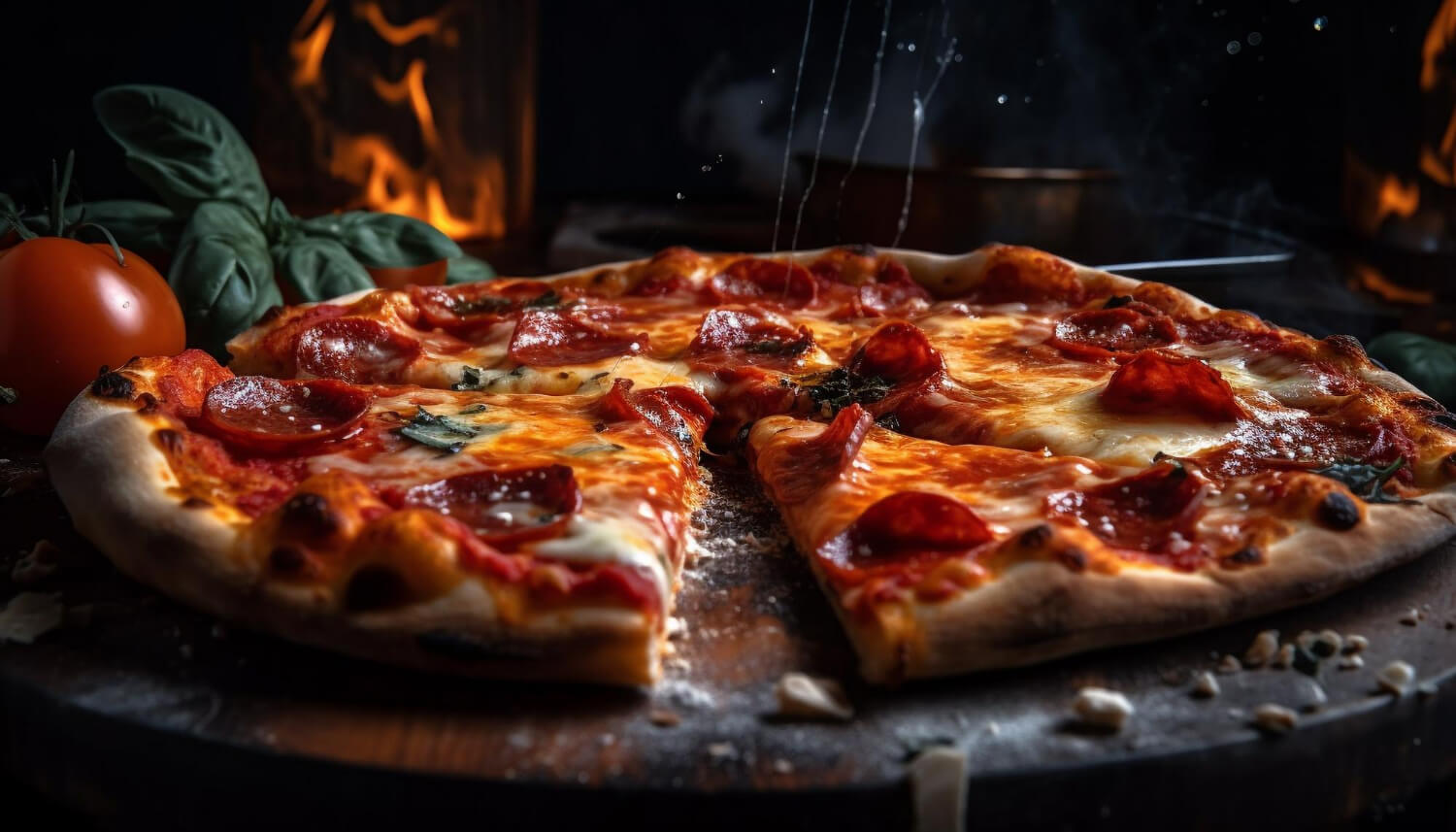
How Many Slices in a Large Pizza

